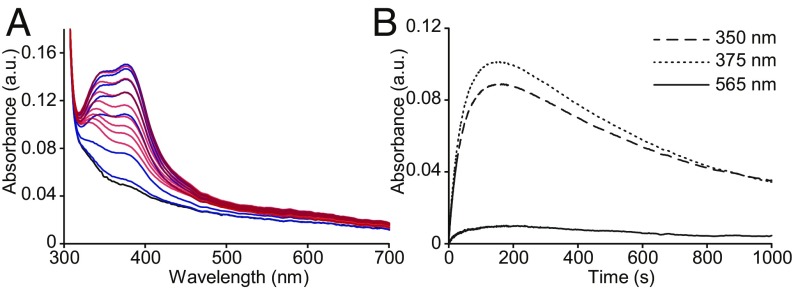Fig. 2.
Addition of Cu(II) to FGE forms a copper complex distinguished by transient UV-vis absorbance features. (A) Stopped-flow UV-vis spectra of apo scFGE following mixing with one equivalent of Cu(NO3)2. Features of the Cu(II)–scFGE complex grow from 1 s (black) to a maximum at 175 s (blue), and decay from 175 to 1,000 s (red). (B) The baseline-subtracted kinetic traces of the 350-, 375-, and 565-nm absorbance features. The kinetic trace of the 375-nm feature was fit to a double-exponential equation, Y = A(1 − e−k1t) + Ae−k2t + C, using nonlinear regression, yielding rate constants k1 = 2.45 × 10−2 ± 1 × 10−4 s−1 for growth and k2 = 8 × 10−4 ± 2.4 × 10−6 s−1 for decay. Errors are the SEs of the fit.

